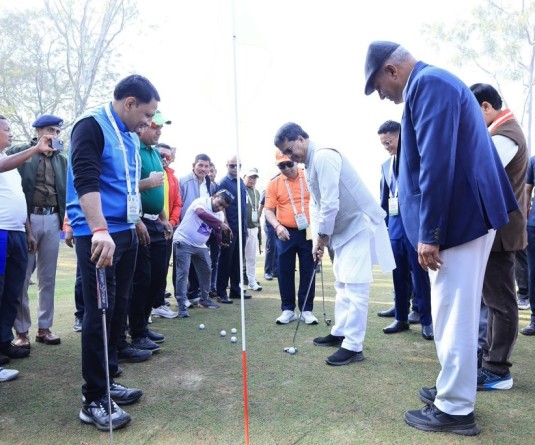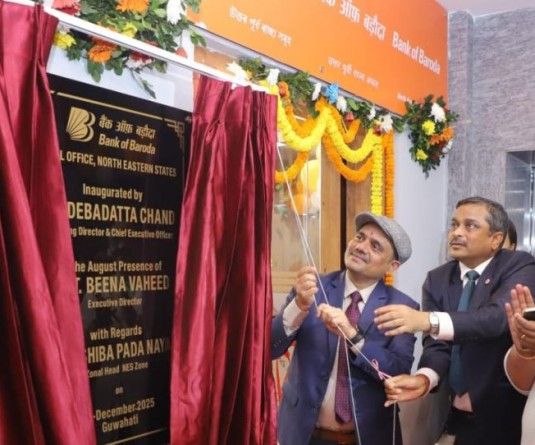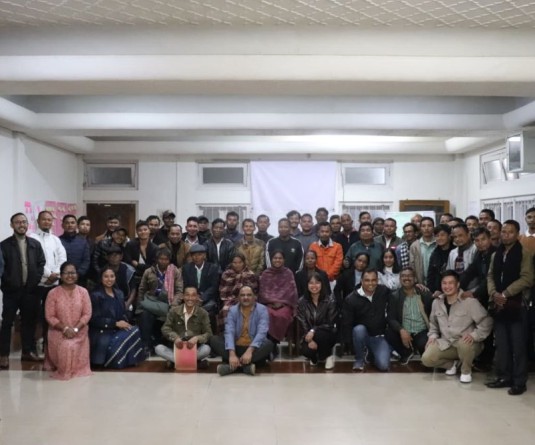
ANSAM organizes Story-telling with Lt. Gen. (Retd.) VS Atem
Morung Express News
Tahamzam (Senapati) | August 17
He was still a child in half pants. The Naga Army had been rolled out in Ukhrul. The Central Reserve Police Force (CRPF) of the Government of India became visible too. When the call came for the youth to volunteer, he begged his family and village elders to let him join the Naga Army. But to no avail. After a few sneaking stunts of unofficially helping the Army, he was forced back to school. His spirit to join the Naga struggle for self determination remained undeterred.
Born on April 7, 1950, Lieutenant General (Retired) VS Atem not only went on to join the movement, he rose to lead the Naga Army as its Chief of Army Staff for more than a decade. Today he is a member of the Collective Leadership of the National Socialist Council of Nagalim; a living legend, his stories are often told around the hearth. Few, however, can tell myth from fact.
On August 15, the All Naga Students’ Association, Manipur (ANSAM) changed much of that. A story-telling session organized by the students’ rights body brought together more than a thousand young and old people from Naga districts of Manipur to listen to Lt. Gen. (Retd.) VS Atem at Katomei Village in Tahamzam (Senapati), Manipur.
“The Naga national movement was at its height. I used to watch them pass through our village, some with .303s and some with Japanese rifles. When I learned that they didn’t even earn chaar annas for giving their sweat, blood and life for our people, I knew they deserve our love and respect,” said the leader while narrating stories of his past.
From the late 1950s to 1968, disallowed to join in official capacity, Atem volunteered with activities like carrying letters from his uncle, a leader in the movement, to leaders like AZ Phizo. “Meeting great leaders inspired me greatly,” he noted. By Class 9, he had read MK Gandhi’s ‘My Experiments with Truth’ seven times over.
Equal and effective force
In 1972, when he was studying in Shillong, a Bollywood released film ‘Yeh Gulistan Hamara’ drew huge protests against it by the Naga community. A violent response from the Assam Police and CRPF acted as trigger. “If they cannot listen to reason, they need to be taught with equal and effective force,” he decided. Leaving academics aside, and much to the ire of his family, VS Atem joined the Naga National Council in May 1973.
Here, he became a soldier so loyal, even his own village of Talui was not cut slack when they refused to pay their dues to the movement. In 1974, he became part of the team that went to China for training in methods of warfare. From Chakhesang area to the border of Mon, they were ambushed 33 times by the Indian Army. No ration left, they survived on tree bark, leaves and roots. Unable to bathe, their bodies attracted hundreds of flies. 264 soldiers perished. 159 of them, thinned from starvation, reached China after a walk of eight months.
“China was at the peak of its cultural revolution. Their generals wore uniforms that were hand stitched after wear and tear. A bicycle cost one Yuan and a radio even lesser,” remembered VS Atem. Making clear that the Nagas would not trade Nationalism rooted in Christian Socialism for any other ideology, the Naga team trained in guerilla warfare and returned prepared to their land.
Formed in 1980, the NSCN became the most robust armed struggle of the South Asian region. It not only administered military blows to the other side, it also helped raise national consciousness among other peoples’ groups in the North East. On a second hand Royal Enfield, VS Atem travelled the region, meeting with and honing the skills of unrepresented peoples to stand up for their right to self-determination.
In 1983, the Indian Army arrested him in Mon. Third degree torture left him unable to stand but he refused to budge. The ammunition taken from the Indian Army were “trophies,” he told them, and “trophies cannot be returned.”
His name written in red ink with ‘khatarnak’ (dangerous) marked beside it on the prison diary, VS Atem was taken to Imphal Jail first, and later transferred to Benaras Central Jail—in both, he actively led movements for prison reforms.
On his release from jail after five years, seven NSCN leaders met in Kolkata and declared him the Chief of Army Staff in 1989. Disciplined and determined, he was termed the ‘Tiger’ among those who fought under his command.
The 1990s saw the Naga Army use tactical force against the Indian Army. When asked why top army officers were targeted, the NSCN conveyed that the Indian Army had created many widows and orphans in Naga society—the Nagas did not want to create a similar Indian society.
Eventually, Indian Army officials called for a political solution to the Naga issue. A ceasefire was signed in 1997. Political negotiations began soon after on the “basis of equality.”
VS Atem’s narration on Tuesday was interspersed with music by Guru Rewben Mashangva, Principal of the Hao Music Exponent, and other Naga artists.
“Many of our young people were born after the 1997 ceasefire. They are unaware of the collective memories of the movement,” said ANSAM President, Seth Shatsang. “We organized this story telling session to bridge the gap between the young and the old; to take us forward together towards a shared future.”
According to L Adani Mao, former president of the United Naga Council and chair for the program, “We need to be conscious of our stories. They get woven into the conscience of the people, into the national narrative of our collective. Stories define who we are as a people.”


.jpg)



